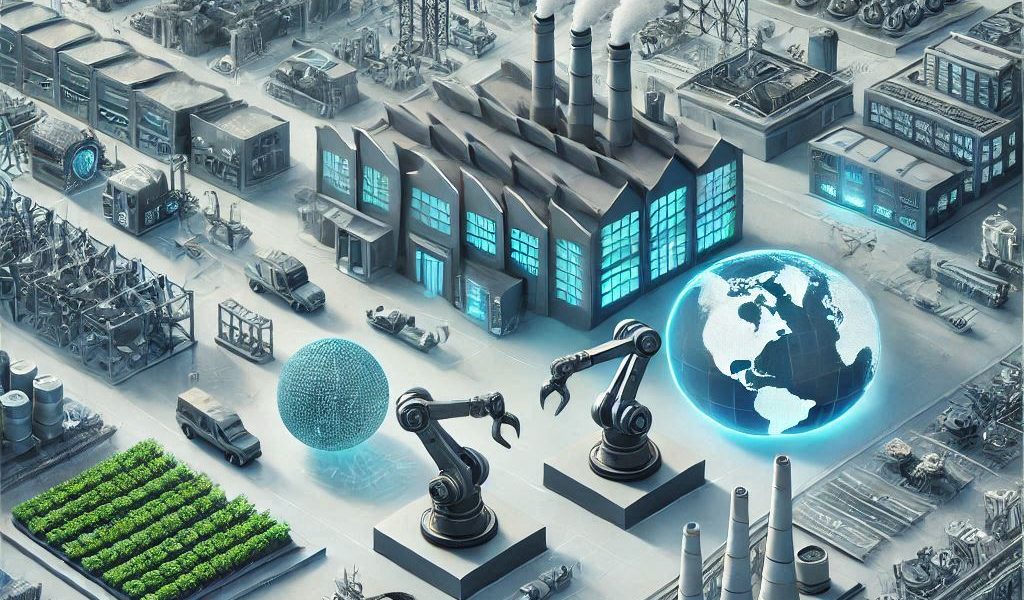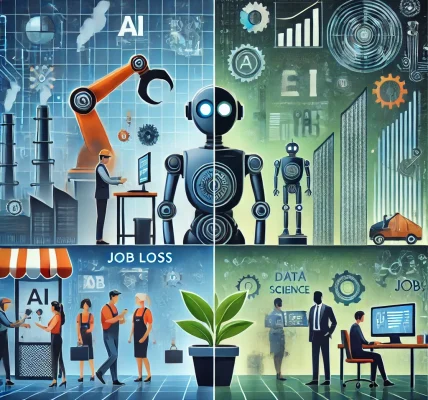The global manufacturing and industrial sectors are undergoing significant transformations. With advancements in technology, shifting supply chain dynamics, and a growing focus on sustainability, the landscape of global manufacturing is rapidly evolving. These trends not only affect the operational aspects of the industry but also have profound implications for investment strategies and economic growth.
In this blog, we’ll delve into the latest trends in global manufacturing and industrial output, their economic implications, and the opportunities they present for investors seeking to capitalize on these developments.
1. The Rise of Smart Manufacturing
Smart manufacturing is revolutionizing the production landscape. With the integration of technologies such as the Internet of Things (IoT), artificial intelligence (AI), and robotics, manufacturing processes are becoming more efficient, flexible, and cost-effective.
- Impact on Industrial Output: Smart factories can optimize operations in real-time, enhance quality control, and reduce downtime. These innovations lead to improved productivity and lower operational costs, boosting industrial output.
- Investment Implications: Investors should consider industries involved in manufacturing automation, robotics, and IoT technologies. Companies developing AI-driven production systems or advanced robotics are well-positioned for long-term growth.
Key Takeaway: Smart manufacturing technologies are increasing efficiency and reducing costs, creating long-term investment opportunities in automation and robotics.
2. Sustainability and Green Manufacturing
As global concern for environmental issues rises, the manufacturing industry is embracing sustainability. From reducing carbon emissions to adopting circular economy principles, green manufacturing is gaining traction.
- Impact on Industrial Output: Sustainable manufacturing practices help companies reduce waste, energy consumption, and their environmental footprint. This trend is pushing manufacturers to adopt eco-friendly materials and renewable energy sources.
- Investment Implications: Companies that are leading the way in sustainable manufacturing, such as those producing renewable energy technology or eco-friendly materials, are attractive to socially responsible investors. Green bonds and ESG (Environmental, Social, Governance) funds are becoming increasingly popular.
Key Takeaway: Sustainable and green manufacturing is a growing trend that aligns with environmental goals and presents investment opportunities in renewable energy, eco-friendly products, and ESG-focused funds.
3. Supply Chain Resilience and Nearshoring
The COVID-19 pandemic highlighted vulnerabilities in global supply chains. As a result, many manufacturers are now focusing on supply chain resilience by diversifying their sources of production and shifting toward nearshoring—moving production closer to home markets to reduce risks and costs.
- Impact on Industrial Output: Nearshoring enables companies to reduce dependence on distant markets, streamline logistics, and shorten supply chain cycles. This leads to more consistent production and delivery timelines.
- Investment Implications: Investors should look into regions benefiting from nearshoring, such as Mexico or Eastern Europe, which offer lower labor costs and proximity to major consumer markets like the U.S. and the EU.
Key Takeaway: Nearshoring and supply chain diversification are reshaping global manufacturing, creating investment opportunities in regions with strong production capabilities and logistics infrastructure.
4. Industry 4.0 and Digitalization
Industry 4.0, the fourth industrial revolution, is characterized by the integration of digital technologies like big data, AI, cloud computing, and augmented reality into manufacturing processes. These digital technologies are helping companies create smart factories that are more connected, efficient, and agile.
- Impact on Industrial Output: The integration of digital technologies allows manufacturers to collect real-time data, optimize processes, and make more informed decisions. This leads to significant improvements in productivity, product quality, and supply chain management.
- Investment Implications: Investors should consider companies that provide digital solutions for the manufacturing sector, including software developers, cloud computing services, and data analytics firms. The rise of 5G networks will also play a key role in enabling these technologies.
Key Takeaway: Industry 4.0 is transforming manufacturing through digitalization, and there are strong investment opportunities in companies offering AI, cloud services, and IoT solutions for the industrial sector.
5. Additive Manufacturing (3D Printing)
Additive manufacturing, or 3D printing, is gaining momentum in industries ranging from aerospace to healthcare. This technology enables the production of complex parts with reduced waste, lower costs, and faster turnaround times.
- Impact on Industrial Output: 3D printing allows for more personalized and on-demand production, which can significantly reduce inventory costs and improve supply chain flexibility. Manufacturers can produce parts locally, reducing the need for long shipping times and reducing environmental impact.
- Investment Implications: Companies involved in 3D printing technology and material production stand to benefit as the adoption of additive manufacturing expands. The technology’s ability to create customized products and parts will also drive demand in industries like healthcare and automotive.
Key Takeaway: Additive manufacturing is transforming production with its ability to reduce waste, cut costs, and increase product customization. It presents exciting investment prospects in manufacturing tech and material sciences.
6. Automation and Labor Trends
Automation continues to reshape the manufacturing workforce. As technologies like robotics and AI evolve, manufacturing jobs are becoming increasingly automated, leading to a shift in labor demand.
- Impact on Industrial Output: Automation increases production speed, consistency, and safety, while reducing human error and labor costs. This trend is accelerating the output of factories and enabling 24/7 production cycles.
- Investment Implications: Investors should look into automation companies, including robotic system manufacturers and AI technology providers, as they are poised for growth due to the rising demand for automation across industries.
Key Takeaway: Automation is enhancing productivity and industrial output, and investing in robotics and AI-driven companies presents long-term growth potential.
7. Global Trade and Tariffs
Global trade policies and tariffs continue to have a significant impact on manufacturing output. The ongoing trade tensions, particularly between the U.S. and China, have led to shifting trade patterns and disruptions in global supply chains.
- Impact on Industrial Output: Tariffs and trade restrictions can increase production costs and disrupt supply chains, forcing manufacturers to adjust their strategies. On the other hand, trade agreements and policies aimed at reducing barriers to trade can stimulate global manufacturing activity.
- Investment Implications: Investors should pay attention to the evolving trade policies of major economies. Countries with favorable trade policies and low tariffs are likely to benefit from increased manufacturing investments.
Key Takeaway: Trade policies and tariffs continue to shape global manufacturing, and investors need to stay informed about international relations and trade agreements to make strategic investments.
8. Conclusion: The Future of Global Manufacturing and Investment Opportunities
The global manufacturing landscape is changing at a rapid pace. From the adoption of smart manufacturing technologies to the increasing focus on sustainability and supply chain resilience, manufacturers are adapting to meet the demands of a rapidly evolving market.
For Investors: Understanding the latest trends in global manufacturing is essential for identifying profitable investment opportunities. Whether it’s in smart factories, automation, green manufacturing, or emerging markets, staying ahead of these trends will allow investors to capitalize on the transformation of the global industrial sector.




